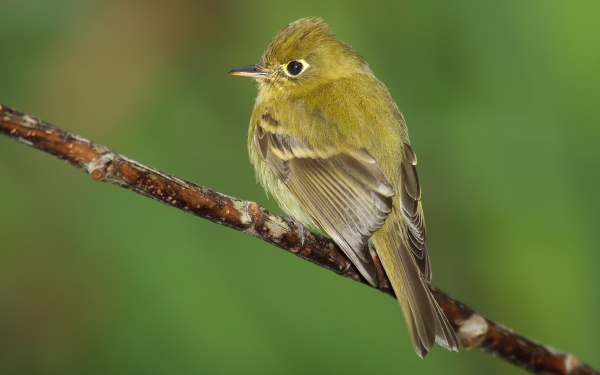Facts About Yellowish flycatcher
The Yellowish Flycatcher is a charming small bird from the tyrant flycatcher family, inhabiting the highlands from southeastern Mexico to western Panama. This petite creature measures just 12.5 cm in length and weighs around 12 g. Its distinctive olive-green upper parts and yellow underparts make it easily recognizable, accompanied by blackish wings with two buff wing bars and a white eye ring. When it calls, you’ll hear a thin "seep" and its dawn song is a rapid "seee seee chit."
Often mistaken for migratory Empidonax species, the Yellowish Flycatcher can be distinguished by its more prominent eye ring and brighter yellow underparts.
These birds favor cool mountain forests, forest edges, clearings, roadsides, streams, and second-growth areas up to nearly 2,500 meters in altitude. They construct deep cup-shaped nests from plant fibers and mosses, typically hidden 2–4.5 meters high in tree crevices or earthen banks, often near streams. A typical nest contains two or three white eggs accented with pale rufous speckles. The female incubates the eggs for 14–15 days, and the chicks fledge approximately 17 days after hatching. Interestingly, the Yellowish Flycatcher sometimes ends up raising the young of brood parasites like the Bronzed Cowbird.
These flycatchers are avid insectivores, dining on insects, spiders, and small berries. They primarily feed their nestlings insects, especially spiders. You’ll often see them foraging by picking prey off foliage, making short flights to catch insects, or even grabbing food from the ground. Outside of the breeding season, they are typically solitary, exhibiting fascinating behaviors and adaptations in their mountain habitats.

 Honduras
Honduras